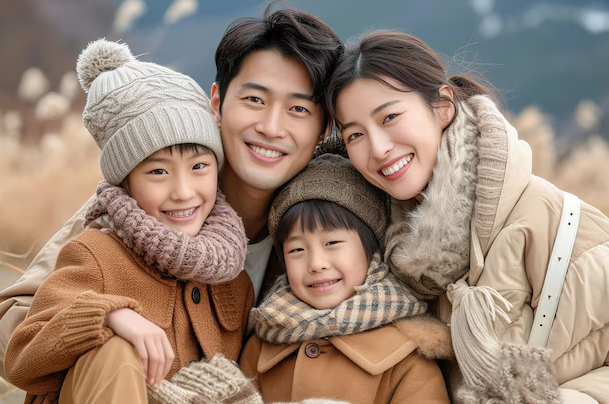In the United States, the concept of the “Asian model minority” has long been used to describe certain stereotypes about Asian Americans. This idea paints a picture of Asian Americans as a hardworking, disciplined, and academically successful group that effortlessly achieves success, often standing in contrast to other racial minorities who may face more challenges. While this narrative is frequently used in political and social discourse, it is essential to understand the complexities behind it and how it oversimplifies the diverse experiences of Asian Americans.
Origins of the Model Minority Myth
The term “model minority” emerged in the 1960s, during a period of intense social change in the United States. It was largely a response to the Civil Rights Movement and growing tensions around issues of race and inequality. Scholars, media outlets, and policymakers began to highlight the perceived success of Asian immigrants, particularly those of Japanese and Chinese descent, as evidence that racial minorities could succeed through hard work, educational attainment, and conformity to American cultural values.
This narrative was particularly compelling in the context of the 1960s and 1970s, when the civil rights struggles of African Americans were in the spotlight. The idea of the “model minority” suggested that, unlike African Americans, Asian immigrants had overcome racism and prejudice through their dedication to education, family values, and economic self-sufficiency.
Asian Americans, particularly those who had arrived in the U.S. through immigration policies that favored highly educated professionals, seemed to embody these ideals. By the late 20th century, Asian Americans were being praised for their academic achievements, success in science and technology fields, and the stability of their family structures.
The Problematic Nature of the Myth
While the “model minority” label might sound positive on the surface, it is deeply problematic. Here are several ways in which this myth distorts the realities of Asian American life:
1. Overlooking Diversity within the Asian American Community
The term “Asian American” encompasses a vast and diverse group of people, including individuals from China, India, Japan, Korea, Vietnam, the Philippines, and many other countries. Each of these ethnic groups has its own unique history, culture, and set of experiences in the U.S. Yet, the “model minority” myth treats all of them as if they share the same characteristics and experiences. This oversimplification ignores the struggles faced by different groups within the broader Asian American community.
For instance, while many Asian American groups—such as those of Chinese, Indian, or Japanese descent—have achieved success in areas like education and business, other groups, particularly Southeast Asians such as Hmong, Khmer, and Laotian communities, have faced significant economic hardships and lower educational attainment. Refugee populations from Southeast Asia, in particular, are often not represented in the model minority narrative, even though they face challenges such as poverty, trauma from war, and language barriers.
2. Perpetuating Racial Stereotypes
By portraying Asian Americans as uniformly successful and academically gifted, the “model minority” myth reinforces certain stereotypes that can have harmful effects. For one, it suggests that all Asian Americans are intellectually superior, which can lead to unrealistic expectations for children and young adults within these communities. This can create immense pressure to succeed academically, sometimes leading to mental health struggles, anxiety, and depression.
Furthermore, this stereotype of academic excellence and discipline is frequently used to contrast Asian Americans with other racial minorities, particularly Black and Latino communities. This can fuel divisiveness and foster resentment, as it pits racial groups against one another rather than acknowledging the systemic inequalities that different groups face.
3. Ignoring Systemic Inequalities and Discrimination
The “model minority” myth suggests that Asian Americans have been able to overcome racism and discrimination simply through hard work, implying that other racial minorities should do the same. This narrative conveniently ignores the historical and ongoing discrimination that Asian Americans face in various forms.
For example, while Asian Americans have made significant strides in areas like education and business, they still face racial prejudice and exclusion in many areas of life. The “glass ceiling” in corporate America, discrimination in housing and lending, and hate crimes—especially against Asian Americans—are all symptoms of a persistent racial hierarchy in the U.S.
Moreover, the myth fails to recognize the significant barriers that many Asian Americans encounter, such as language barriers, immigration status, and lack of access to resources. For instance, many Asian immigrants arrive in the U.S. with limited English skills, which can make it difficult to access quality education and jobs.
4. Mental Health Stigma and the Pressure to Conform
The myth also perpetuates the idea that Asian Americans are mentally tough and unbothered by the challenges they face, often sidelining issues like mental health and emotional well-being. There is a strong cultural stigma around mental health in many Asian communities, and the pressure to conform to the “model minority” ideal can exacerbate these issues.
Asian American students, in particular, may feel overwhelmed by the intense pressure to excel academically and professionally. This can result in high rates of stress, anxiety, and depression. However, due to cultural expectations and societal pressure, seeking help for mental health issues can often be seen as a sign of weakness, leading to underreported mental health struggles.
5. Impact on Policy and Public Perception
The model minority myth has been used in policymaking and public discourse to downplay the need for programs aimed at reducing racial disparities. For example, politicians and policymakers may use the success of Asian Americans as an excuse to argue that affirmative action or social programs are unnecessary. This ignores the nuanced and complex realities of racial inequality and the distinct challenges faced by different communities, including Asian Americans.
The myth also affects how Asian Americans are treated in the broader social landscape. When an entire group is portrayed as successful and self-sufficient, it diminishes the recognition of those who are struggling and obscures the need for targeted support for certain Asian American communities. It also pits Asian Americans against other racial minorities, implying that they are somehow “better” at overcoming challenges, rather than addressing the root causes of inequality.
Moving Beyond the Myth
To move beyond the limitations of the “model minority” myth, it is crucial to recognize and celebrate the diversity within the Asian American community. We must acknowledge the different experiences of immigrant groups and refugees, as well as the unique challenges that different communities face. Additionally, it is important to challenge the idea that success is a result solely of individual effort, and to recognize the structural barriers that can impede opportunity, particularly for low-income and underrepresented groups within the Asian American population.
By fostering a more accurate and inclusive understanding of Asian Americans, we can create a more empathetic and supportive society that takes into account the true range of experiences within the community. It is essential to move away from oversimplified narratives and instead focus on the lived realities of individuals, recognizing that success is never a one-size-fits-all story.
While the “model minority” myth may have been used to celebrate the achievements of some Asian Americans, it fails to capture the full complexity of their experiences. By breaking free from these stereotypes, we can work toward a more inclusive and just society for all people, regardless of their background or identity.




